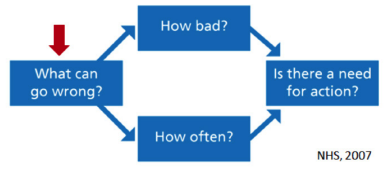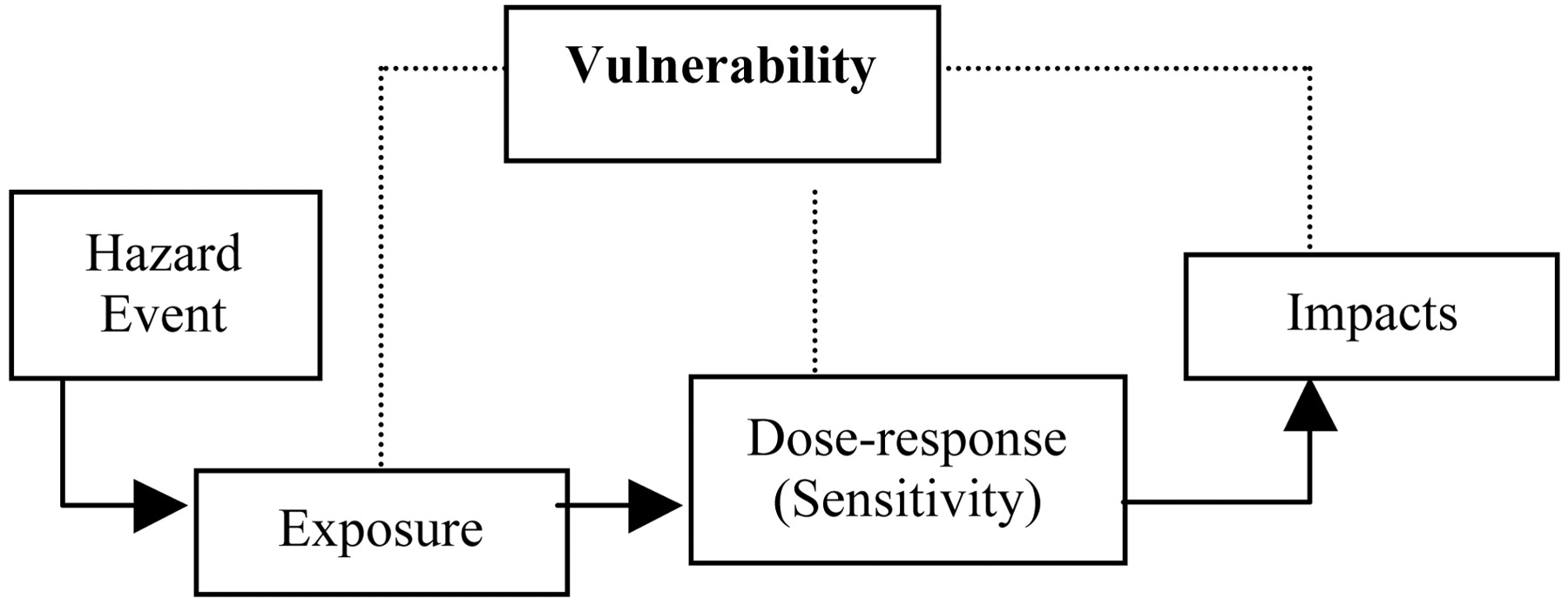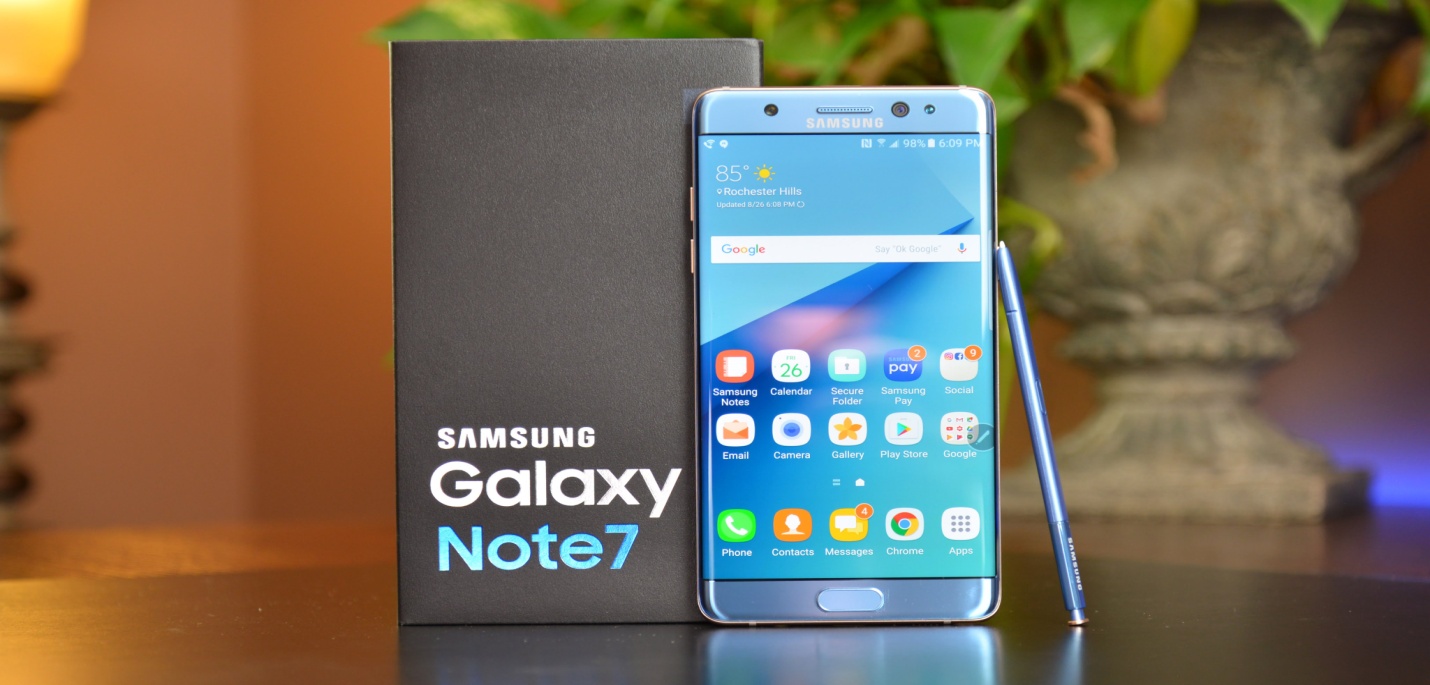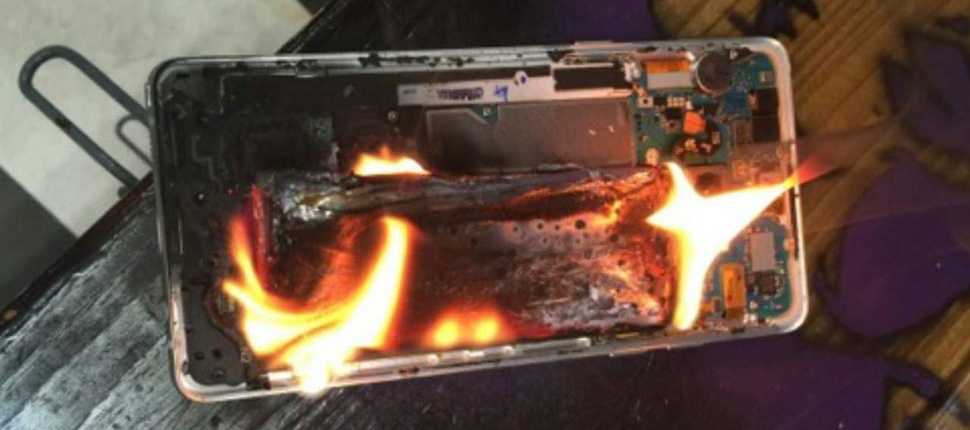Introduction
Samsung is one of the leading manufacturers and distributors of electronics in the global market. The company has created a strong brand because of its unique and high quality products in the market (Mamiit, 2017). In August 2016, the company introduced Samsung Galaxy Note 7 as a direct response to emerging demands in the global market. The unique qualities of this phone were a demonstration of the company’s commitment to using cutting-edge technologies to meet and exceed expectations of its customers. However, the widespread incidences of explosion of this phone’s batteries, as shown in appendix 2, resulted into a major blow to the firm’s global sales and it significantly tainted the brand of the phone (Power and Ferratt, 2019).
It was an indication that the firm was willing to take unnecessary risks to outsmart its competitors in the market. Although the management made a recall of all the Samsung Galaxy Note 7 series, the damage was already done and the firm has since been struggling to repair its image (Makdissi, Nehme and Chahine, 2020). In this paper, the researcher seeks to evaluate the case to understand the risk attitude and risk appetite of the company. The paper also discusses risk identification strategies, risk consequences and risk impact based on the case provided.
Discussion
The case shows that before the incident with the Samsung Galaxy Note 7, shown in Appendix 1, this company had a strong reputation and was making a good progress in expanding its global market share against Apple Inc. However, the problem with this model’s batteries caused fear among its customers and even in the aviation sector (Ahmeti and Vladi, 2017). It revealed that the company failed to conduct a thorough risk analysis of its products before releasing them to the market.
As a result, the company was put on the defensive, struggling to protect its image and maintain its sales of other popular Samsung products (Gupta, 2017). It is important to analyse the risk attitude, risk appetite, risk identification strategies and risk impact based on the case study before using Tuner B. model to discuss how this firm should have addressed the problem.
Analysis of the Case
It is necessary to start by analysing the case to understand how this firm found itself in this problem and how it made an effort to address the impact of risk occurrence. The case shows that Samsung was in a bitter competition with Apple Inc in the Smartphone market (Terje, 2016). Each company was keen on developing unique products that would exceed expectations of customers (Madura, 2016). In this fierce battle for the growing market, the company developed a new product, Samsung Galaxy Note 7 that was considered superior to other products existing in the market at that time. However, the firm failed to take into consideration safety measures, especially of the batteries in the new phone (Ridha and Alnaji, 2015). As it turned out, the batteries used lacked the capacity to support the new system.
Unfortunately, this problem was not detected until the firm had enrolled its products in the market. The outcome was disastrous as customers started experiencing fire outbreaks when using their phones (Li, Deng and Tan, 2019). The firm had to halt further production of this model, recall the products that were already in the market, make necessary compensation to its customers and dealers across the world and deal with a tainted image that had taken it decades to build (Whitman and Mattord, 2018).
The case study shows that the quick action taken by the firm to recall the products from the market helped in protecting its integrity. It demonstrated that the firm was keen on protecting its customers (Jovanović et al., 2016). However, the unfortunate incident made it possible for its main rival in the market to gain the market share.
Risk Attitude
Risk attitude refers to the approach that a firm takes to respond to uncertainties based on its perception. Whenever a firm faces a new challenge, the attitude of the management towards such uncertainties often defines the response approach (Heathman, 2017). In the case, the management explained, “The principal root cause of the first manufacturer’s battery problem (Battery A) was negative electrode deflections and the second manufacturer’s product (Battery B), suffered from abnormal ultrasonic welding burrs” (Lopez, 2017, p. 3).
Although the firm recalled the product from the market, it blamed the manufacturers of the batteries for the explosion (Jiang and Gong, 2019). However, it is worth noting that the firm responded within the right time to recall the products and to address concerns of its customers who were either waiting for the product or those who had already purchased it but had to take it back to the dealers.
Risk Appetite
Risk appetite is risk level that a firm is willing to accept in its pursuit of a given goal. The case study shows that Samsung has a huge risk appetite (Rehacek and Bazsova, 2018). In its effort to outsmart Apple Inc, the firm developed a unique product that had never been seen in the market, but in the process, failed to ascertain its safety to the users. Hartley (2017, p. 9) argues that “Some commentators have speculated that it is this technology-driven competition that led to Samsung cutting corners in their processes or at least pushing the boundaries of the phone’s capabilities too far.” The management of this company was willing to sacrifice its image in an effort to develop the unique product. It was convinced that their product would cement its position as the market leader in the Smartphone market (Marchewka, 2015).
Hartley (2017, p. 11) state that “It could be that to meet consumers’ desire for slim and light phones, compromises were made regarding the battery and the wiring for that battery, which caused the overheating of the phones.” As the firm realised that the majority of its customers were demanding for slim phones, the company focused on meeting this demand without properly taking into consideration the possible consequences of such actions. The goal was to meet customers’ needs at all costs and the outcome was disastrous.
Risk Identification
It is important for a firm to have an effective risk identification mechanism. Yang (2017) argues that having a model of identifying risks before they occur may be critical in determining the ability of a firm to overcome various negative forces in the market. The simple model showed in figure 1 below shows how a firm can identify potential risks. It starts by investigating what can go wrong in the overall operations of the firm (Zhongming et al., 2019).
When introducing the new Samsung Galaxy Note 7, the company should have identified all the potential risks and problems that it may have. The second step is to evaluate how bad the problem can be and how often. Determining the magnitude and likelihood of such a problem helps a firm to understand whether the risk is worth taking (Hadzisalihovic, Pruckner and Kern, 2019). In this case, the likelihood was very low and it may explain why this firm ignored it despite its massive impact.

Risk Consequences/Risk Impacts
The occurrence of this hazard had a major impact on the firm in various aspects. The immediate impact was the loss of revenue as the firm was forced to order all its global dealers to stop the sale of the product (Zhou and Lianqian, 2020). Next was the compensation that the firm had to make to these dealers and customers who had purchased the faulty product. The biggest and long-term impact was the tainted image of the firm in the global market (Yang, Ishtiaq and Anwar, 2018). The management was aware that it would take some time to overcome these challenges fully.
Responding to the Disaster
The case study shows how this company was faced with a major disaster, which not only threatened its reputation in the market but also affected sales and had the potential of leading to major litigations around the world (Whitman and Mattord, 2016). Using Tuner B. model in figure 2 below as a framework for analysing risks, it is possible to understand the steps that this firm should have taken to address risks associated with the batteries of this phone.

The model starts when there is an event of hazard that requires a firm to respond adequately. Once the hazard is detected, the first step is to identify how it exposes the firm to various risks (Dionne, 2019). In the case provided, the hazard posed a major risk to the firm’s sales, image and finances both in the long and short term. Immediately after determining the exposure, this model requires the management to respond immediately based on the sensitivity of the case (Chakrabarti and Sen, 2019). The only solution that Samsung had was to recall the phones from the market, issue apology and make the necessary compensation (El-Karim, Elnawawy and Abdel-Alin, 2017). The last stage is to deal with the impacts of the exposure to the hazard.
The biggest impact was the tainted image of the company. It had taken the firm decades to develop a strong reputation as a firm that offers quality product to its customers (Kucuk and Flouris, 2017). However, this incidence threatened to erode that trust. The firm’s immediate response to the threat helped as customers got convinced that it was a technological hitch and the company was keen on addressing the problem. When using this model, Stewart, Warburton and Smith (2017) emphasise the need for a firm to understand and address its vulnerability. To Samsung, the greatest concern was its image. It had to assure customers that other Samsung branded products are safe. Effective and regular communication became a critical aspect of responding to this disaster.
Conclusion and Recommendations
The market for electronic products has become increasingly competitive with the emergence of various players, but Samsung remains one of the dominant players. Its cutting edge technologies and commitment to maintaining high quality standards has made it one of the favourite brands in the market. The incident with its Samsung Galaxy Note 7 was a major blow that not only threatened the firm’s revenue but also its image in the market.
It demonstrated that in its effort to meet and exceed customers’ expectations, it was dangerous push technology beyond a firm’s capabilities. The firm had failed to conduct thorough tests on these products to ascertain their safety. It went ahead to release a dangerous phone as a way of demonstrating its superiority over some of its main rivals. The outcome was disastrous. Although it made the right steps to address the problem, the impact of the incident brought to question the ability of the firm to deliver quality products to its customers. The firm should take into consideration the following recommendations in its risk management.
- Samsung should improve its product testing systems to ensure that they do not release a product that poses danger to its customers.
- There should be a close coordination between Samsung and firms manufacturing various components of its products. These firms should not compromise on quality.
- In case of a disaster, there should be an immediate response to protect the firm’s image.
Reference List
Ahmeti, R. and Vladi, B. (2017) ‘Risk management in public sector: a literature review’, European Journal of Multidisciplinary Studies, 2(5), pp. 323-328.
Bagley, C. (2019) Managers and the legal environment: strategies for the 21st century. Melbourne: South-Western.
Chakrabarti, G. and Sen, C. (eds.) (2019) The globalization conundrum: dark clouds behind the silver lining, global issues and empirics. New York, NY: Cengage.
Dionne, G. (2019) Corporate risk management: theory and applications. Hoboken, NJ: John Wiley.
El-Karim, M., Elnawawy, O. and Abdel-Alin, A. (2017) ‘Identification and assessment of risk factors affecting construction projects’, HBRC Journal, 13(2), pp. 202-206.
Gupta, A. (2017) Project appraisal and financing. New Delhi: Delhi PHI Learning.
Hadzisalihovic, A., Pruckner, J. and Kern, A. (2019) ‘Concentration risk indicator’, Journal of Financial Risk Management, 8(1), pp. 92-105.
Hartley, S. (2017) ‘The case of the exploding Samsung phones’, Busidate Publications, 5(1), pp. 9-11.
Heathman, A. (2017) ‘We finally know why Samsung’s galaxy note 7s exploded’, Harvard Business Review, 1(1), pp. 1-8.
Jiang, Z. and Gong, X. (2019) ‘Research on issues of budget performance management on the process of budgeting by game theory’, Journal of Financial Risk Management, 8(1), pp. 193-199.
Jovanović, F. et al. (2016) ‘Risk management impact assessment on the success of strategic investment projects: benchmarking among different sector companies’, Acta Polytechnica Hungarica, 13(5), pp. 221-236.
Kucuk, A. and Flouris, T. (2017) Corporate risk management for international business. Singapore: Springer Singapore.
Li, Q., Deng, G. and Tan, X. (2019) ‘Analysis of the dependence of stock risk based on copula theory’, Journal of Financial Risk Management, 8(1), pp. 224-231.
Lopez, M. (2017) ‘Samsung explains note 7 battery explosions and turns crisis into opportunity’, Forbes Tech, 2(1), pp. 1-3.
Madura, J. (2016) International financial management. Mason, OH: South-Western.
Makdissi, R., Nehme, A. and Chahine, R. (2020) ‘The influence of financial culture on sme’s financial performance’, Journal of Financial Risk Management, 9(1), pp. 1-22.
Mamiit, A. (2017) ‘Samsung investigation blames irregular battery size, manufacturing issues for exploding galaxy note 7’, Tech Times, 4(1), pp. 1-2.
Marchewka, J. (2015) Information technology project management: providing measurable organizational value. Hoboken: John Wiley & Sons.
Power, J. and Ferratt, T. (2019). The real-time revolution: transforming your organization to value customer time. Oakland, CA: Berrett-Koehler Publishers.
Rehacek, P. and Bazsova, B. (2018) ‘Risk management methods in projects’, Journal of Eastern Europe Research in Business and Economics, 18(1), pp. 1-11.
Ridha, M. and Alnaji, L. (2015) ‘Analysis and measurement of risks in business: a case study on the Jordan Valley Authority’, European Journal of Business and Management, 7(9), pp. 9-15.
Saunders, M. and Lewis, P. (2017) Doing research in business and management. London: Pearson Education Limited.
Stewart, S., Warburton, F. and Smith, J. (2017) Cambridge international AS and A level travel and tourism course-book. New York, NY: Cambridge University Press.
Terje, A. (2016) ‘Risk assessment and risk management: review of recent advances on their foundation’, European Journal of Operational Research, 1(4), pp. 1-13.
Whitman, M. and Mattord, J. (2016) Management of information security. Melbourne: Course Technology.
Whitman, M. and Mattord, J. (2018) Principles of information security. Melbourne: Cengage Learning.
Yang, S., Ishtiaq, M. and Anwar, M. (2018) ‘Enterprise risk management practices and firm performance, the mediating role of competitive advantage and the moderating role of financial literacy’, Journal of Risk and Financial Management, 11(35), pp. 1-17.
Yang, Y. (2017) ‘Comparison and analysis of Chinese and United States stock market’, Journal of Financial Risk Management, 9(1), pp. 44-55.
Zhongming, T. et al. (2019) ‘On the nexus of credit risk management and bank performance: a dynamic panel testimony from some selected commercial banks in China’, Journal of Financial Risk Management, 8(1), pp. 125-145.
Zhou, M. and Lianqian, Y. (2020) ‘Quantitative stock selection strategies based on kernel principal component analysis’, Journal of Financial Risk Management, 9(1), pp. 23-43.
Appendices
Appendix 1: Samsung Galaxy Note 7

Appendix 2: Galaxy Note 7 on Flames

